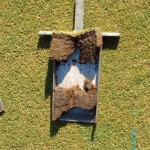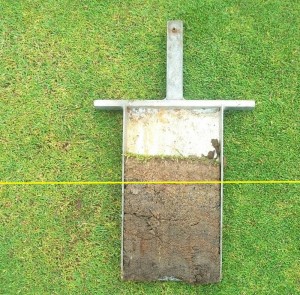The condition known as localised dry patch (LDP) which is so prevalent on bowling greens throughout the UK is a very frustrating problem for many bowling clubs.
The frustration comes mainly from the fact that LDP isn’t a disease so it can’t be eradicated by a simple application of fungicide or any other chemical.
LDP is instead a disorder of turf that causes the soil beneath some areas of the green to become hydrophobic or repellent to water.
LDP causes large areas of the green surface to turn brown and sometimes even recede below the main surface level, causing bumpy, uneven surfaces and an increasingly poor bowling experience as the season progresses.
Like almost everything else that goes wrong with bowling greens LDP is merely a symptom of other issues present on the green; in this case excessive sand content in the green’s rootzone profile (topsoil).
The excess of sand makes the rootzone inert and unable to retain moisture or nutrients. More importantly, the soil can’t sustain a big enough population of beneficial soil micro-organisms, which would assist with the decomposition of thatch and produce essential plant useable nutrients.
The recovery process can take several years, although there will be notable improvements to the green surface throughout the recovery process.
To overcome this problem, it is important to adopt a completely new approach to green maintenance along the lines of the performance greens program and the single most important part of this process is to stop throwing tonnes of sand at the green every year.
More information here: LDP



